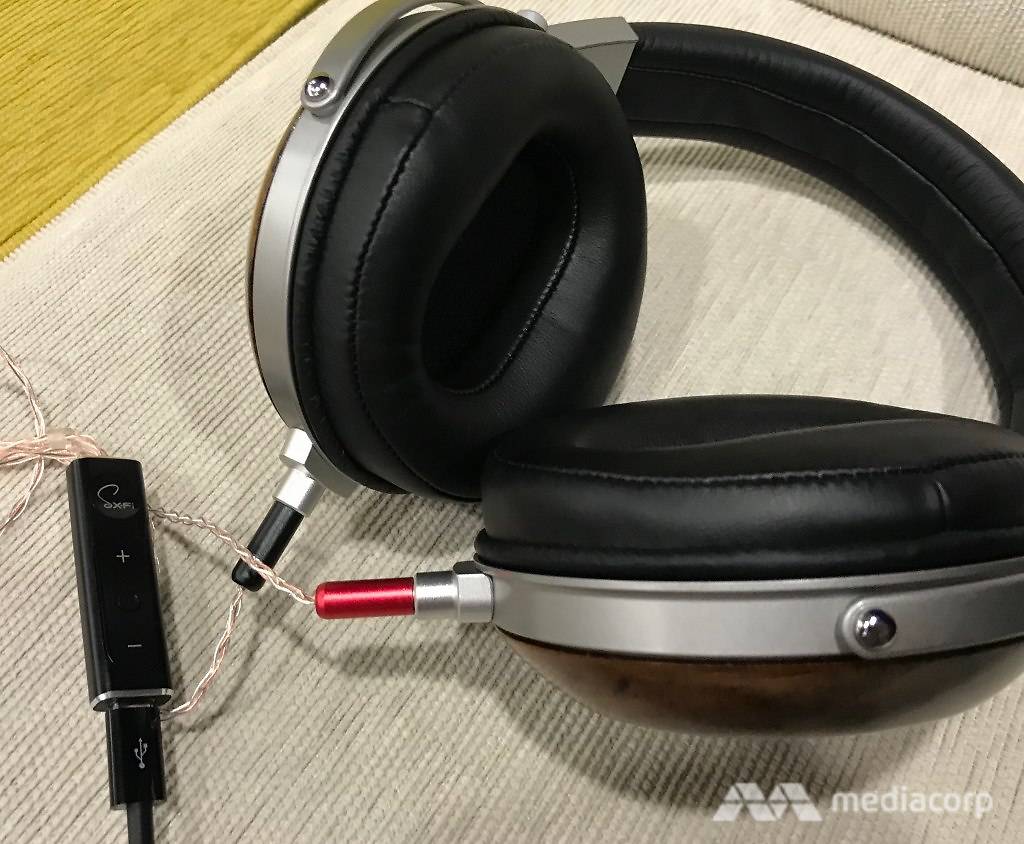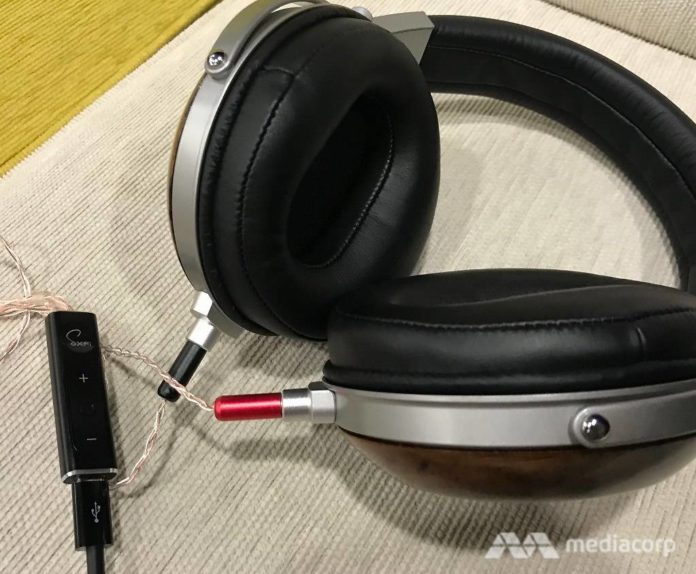SINGAPORE: “Magic is what I’m going to show you.”
Mr Sim Wong Hoo, the founder of the Singaporean company who brought the world the default standard for consumer audio in PCs in the 90s, is obviously excited. Since the SoundBlaster, Creative Technology has not really had a major hit, but its new innovation could be the chance for the company to rejoin the big leagues.
On Wednesday (Mar 7), Mr Sim presented to reporters and analysts what he hailed as the “holy grail” of the audio industry at the company’s Jurong East headquarters. Called the Super X-Fi, Creative’s latest innovation is not a headphone nor a software.
Rather, it is a technology that can be used in headphones and dongles for mobile devices that is meant to recreate the listening experience of a multi-speaker surround sound system.
“The whole industry has been hunting for it,” said Mr Sim.
The founder said the project has been 20 years and more than US$100 million in research and development (R&D) outlay in the making – all in an effort to create a realistic and immersive audio experience for the user.
The response to the new innovation has thus far been mostly positive, with Creative receiving a Best of CES 2018 award at the electronics trade show in Las Vegas in January.
Investors are also seemingly impressed with the technology as well, helping send Creative’s share price soaring to levels not seen since 2007 on the Singapore stock market.
“I’ve a confession: We sell tons of headphones (but) I don’t use them,” Mr Sim shared. The existing ones in the market today are “stressful”, he added, saying the brain probably has to compensate for the audio technology’s inability to fully recreate a realistic enough sound.
He likened this to myopia. For someone with the condition, taking off the spectacles means having to squint in order to see something unless brought up close. This requires brain power too, and it is stressful on one’s eyes, he explained.
AI A “CRITICAL PIECE”
So what’s the solution, as Creative sees it?

The Super X-Fi dongle, which will cost US$150, will help give any earphone the immersive sound experience, Creative touted.
Mr Sim said that the Super X-Fi technology works in tandem with a free app – which is expected to be released in the second quarter of this year – that customises a sound profile for each user through scanned images of the ears and faces.
The bone structure of one’s face, as well as how sound enters the ear, affect how sound is received by an individual, and the technology aims to recreate ambient sound unique to that person.
The computation of such a large data set to create a person’s sound profile is done using artificial intelligence (AI) – something the CEO said Creative got into “years ago” without going into specifics. “There’s so much data, if we don’t use (AI), we will die.”
Additionally, the team has created a database of existing earphones in the market so that the sound profiles can be mapped on to the earphones for the “magic of headphone holography”, as the company touted.
“AI is a critical piece” of the Super X-Fi offering, Mr Sim said, when asked what differentiates this technology from current offerings on the market.
A “complex algorithm” is then used to “compute in real time an inverse function of what external sounds will sound like uniquely for an individual’s ears”, he explained.
What followed were countless cycles of trials, tests and retests, and even in the days leading up to this year’s Consumer Electronics Show (CES), the entrepreneur was not convinced that the technology was up to scratch, and had asked for it to be tested by employees internally.
Validation from those who tried Super X-Fi soon followed though, Mr Sim said, who highlighted comments from a stage engineer.
This engineer, Mr Sim said, had re-created the stage for American rock band Steely Dan during a concert years back, and when he heard the band’s song played during the demo, he felt as if he was back at the scene again.
LEARNING FROM PAST LESSONS
With Super X-Fi generating much interest post-CES and its share price hitting the high notes – Creative touched an 11-year high of S$10 on Wednesday – Mr Sim said that the company is ready to “run like hell” to cash in on its invention, much like it did with the SoundBlaster all those years ago.
It plans to launch the free app in the second quarter of this year, which will allow users to experience the touted sound experience with downloaded content but not streaming services such as Spotify and YouTube.
Creative also plans to release a dongle, which will retail at US$150 (S$197.20), the following quarter, while a wireless headphone is planned for the fourth quarter.
Plans are also in place to collaborate with hardware manufacturers to include the technology in phones, PCs, laptops, TVs, sound bars, Blu-ray players, Mr Sim added.
A close-up look at the Super X-Fi chip designed by Creative Technology.
This strategy is in part distilled from lessons of the past, Mr Sim acknowledged, citing the SoundBlaster as an example.
He said that he had previously wanted to sell the chips behind the SoundBlaster technology. However, each time he brought up the topic, others would advise against the idea, saying that doing so would only breed more competition.
Competition came anyway, which whittled away the company’s revenue base, he added.
Asked what the most urgent thing is for the company to do now, the CEO said that it would be to have 50 million people use its free app in the next two years. The number is “arbitrary”, he added, but it is a milestone to signal the product has “graduated”.
One analyst who gave his take on Super X-Fi said that its “plug-and-play capabilities and the customised listening experience” have not been seen in the market. DBS Vickers analyst Sachin Mittal said in his report on Mar 1 that the plug-and-play feature would also be of “strong appeal to the virtual reality community”.
Mr Mittal wrote: “We assume that Super X-Fi would be able to capture a 0.5 per cent market share of the global headset market in FY20 ended June, resulting in sales of US$232 million.”
That said, his risk assessment is “high” based on considerations such as whether Creative will be able to replicate test lab results in real life, and how negative online reviews of the product when launched may impact adoption rates.
Mr Sim, too, acknowledged that Creative needs “a lot of people to test” the app and, by extension, the Super X-Fi technology, to assess the consistency of experience.
That does not mean he isn’t excited though.
“When (Creative) went IPO, and I became a paper millionaire, I was like: ‘OK lor’,” he said. “(But with Super X-Fi), I’ve never been so excited in my life.”
If Super X-Fi does live up to the growing hype, Mr Sim’s excitement could get contagious.





